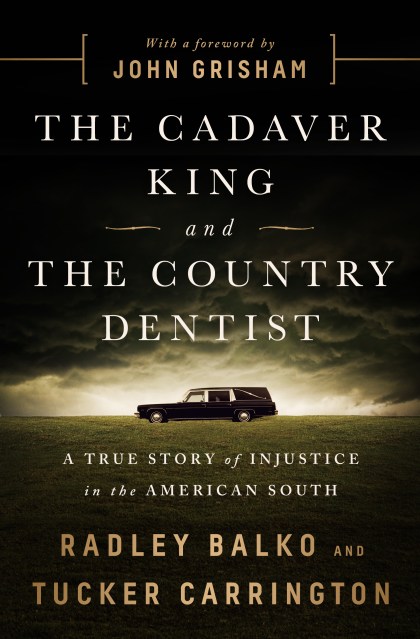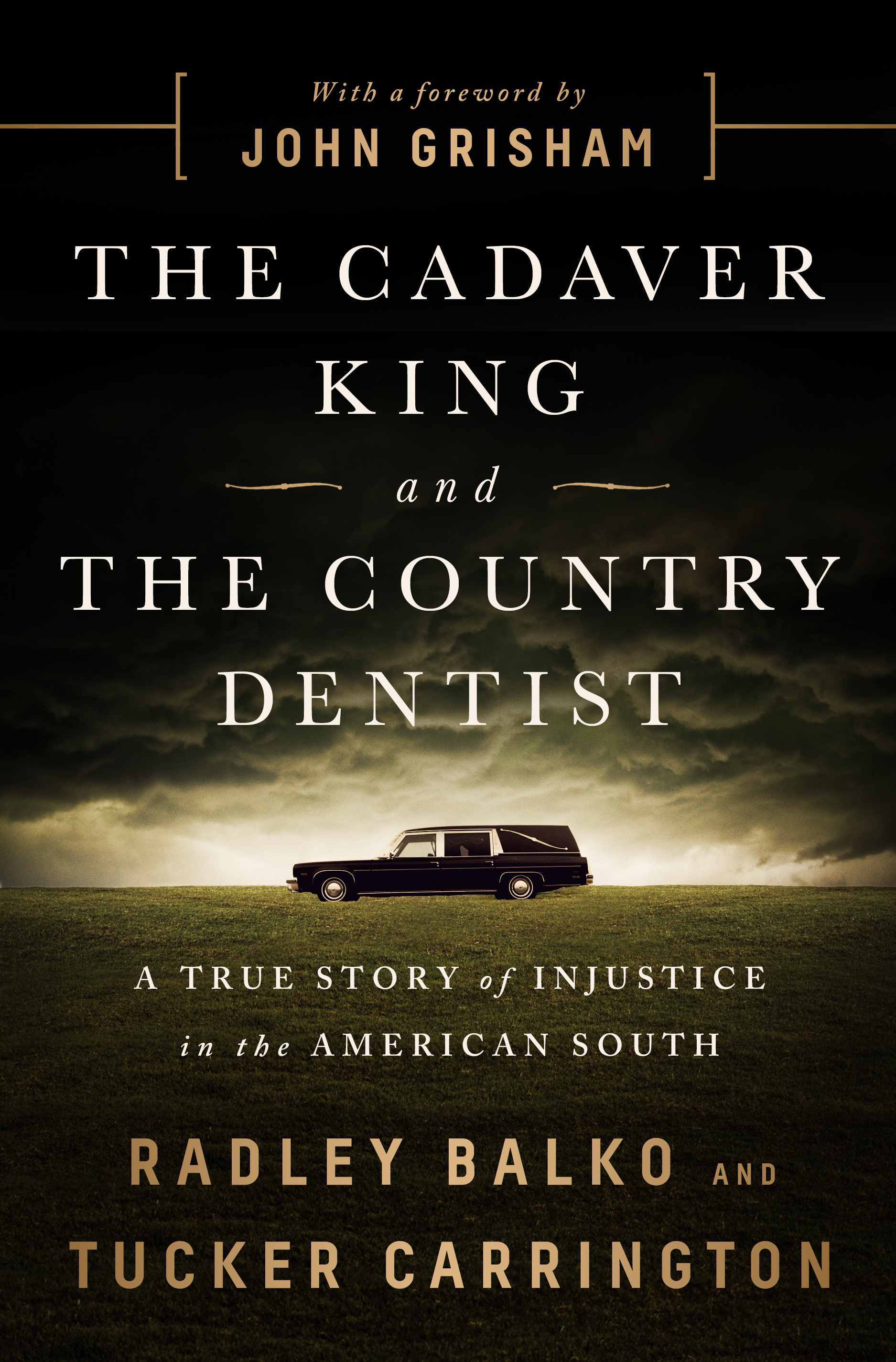Promotion
Use code BEST25 for 25% off storewide. Make sure to order by 11:59am, 12/12 for holiday delivery!
By clicking “Accept,” you agree to the use of cookies and similar technologies on your device as set forth in our Cookie Policy and our Privacy Policy. Please note that certain cookies are essential for this website to function properly and do not require user consent to be deployed.
The Cadaver King and the Country Dentist
A True Story of Injustice in the American South
Contributors
By Radley Balko
Foreword by John Grisham
Formats and Prices
- On Sale
- Mar 12, 2019
- Page Count
- 416 pages
- Publisher
- PublicAffairs
- ISBN-13
- 9781541774056
Price
$19.99Price
$24.99 CADFormat
Format:
- Trade Paperback $19.99 $24.99 CAD
- ebook $13.99 $17.99 CAD
- Hardcover $28.00 $36.50 CAD
- Audiobook Download (Unabridged)
This item is a preorder. Your payment method will be charged immediately, and the product is expected to ship on or around March 12, 2019. This date is subject to change due to shipping delays beyond our control.
Buy from Other Retailers:
After two three-year-old girls were raped and murdered in rural Mississippi, law enforcement pursued and convicted two innocent men: Kennedy Brewer and Levon Brooks. Together they spent a combined thirty years in prison before finally being exonerated in 2008. Meanwhile, the real killer remained free.
The Cadaver King and the Country Dentist recounts the story of how the criminal justice system allowed this to happen, and of how two men, Dr. Steven Hayne and Dr. Michael West, built successful careers on the back of that structure. For nearly two decades, Hayne, a medical examiner, performed the vast majority of Mississippi’s autopsies, while his friend Dr. West, a local dentist, pitched himself as a forensic jack-of-all-trades. Together they became the go-to experts for prosecutors and helped put countless Mississippians in prison. But then some of those convictions began to fall apart.
Here, Radley Balko and Tucker Carrington tell the haunting story of how the courts and Mississippi’s death investigation system — a relic of the Jim Crow era — failed to deliver justice for its citizens. The authors argue that bad forensics, structural racism, and institutional failures are at fault, raising sobering questions about our ability and willingness to address these crucial issues.
-
“A haunting true‑crime tale of systemic incompetence and racism...Balko and Carrington have written a cry for help.”New York Times
-
“A superb work of investigative reporting...Balko and Carrington combine expertise, industry and outrage into a searing narrative.”Wall Street Journal
-
“A horrifying exposé of how a few individuals can infect an entire state's criminal justice system.”Kirkus (Starred)
-
“A clear and shocking portrait of the structural failings of the U.S. criminal justice system... This eminently readable book builds a hard‑to‑ignore case for comprehensive criminal justice reform.”Publishers Weekly (Starred)
-
“Through the intensive scrutiny of how the men were speedily tried, convicted, and then released after years in prison, the authors uncover an unholy alliance of racist cops and prosecutors with questionable death investigations and misapplied forensics. This work should spark both admiration and outrage‑and, one hopes, reform.”Booklist
-
“Of all the tragedy documented in this book, surely the most pernicious is the unacknowledged progression of discriminatory policies in the American criminal justice system. The black men at the story's center were not snatched out of a Mississippi jail and lynched. They were falsely imprisoned. They were haunted by state efforts to execute them for three decades. This is a powerful and instructive story, masterfully told by Balko and Carrington.”Ibram X. Kendi, National Book Award winning author of Stamped from the Beginning
-
“The Cadaver King and the Country Dentist paints a devastating picture of Mississippi’s ongoing systemic abuse of junk evidence by medical examiners and highlights the myriad ways the current legal and political systems reward certain and speedy convictions. This carefully constructed and highly‑readable account also reveals the ways in which catastrophic and almost comic expert errors can lead to hasty conclusions, ruined lives, and may take years to correct, if they are corrected at all.”Dahlia Lithwick, Senior Editor, Slate
-
“If, like most Americans, you think that our legal system protects innocent people from being falsely convicted, be prepared to have your faith shattered. In horrifying detail, Radley Balko and Tucker Carrington show how structural racism, junk science, overzealous prosecutors, compliant judges, and a bloodthirsty press conspired to wreck lives and convict the innocent. Grounded in Mississippi courtrooms, but with national implications, this book will leave you outraged and hungry for change.”James Forman, Jr, author of Locking Up Our Own
Newsletter Signup
By clicking ‘Sign Up,’ I acknowledge that I have read and agree to Hachette Book Group’s Privacy Policy and Terms of Use








